More than 160 homes destroyed by lava at Cumbre Vieja, La Palma, Canary Islands
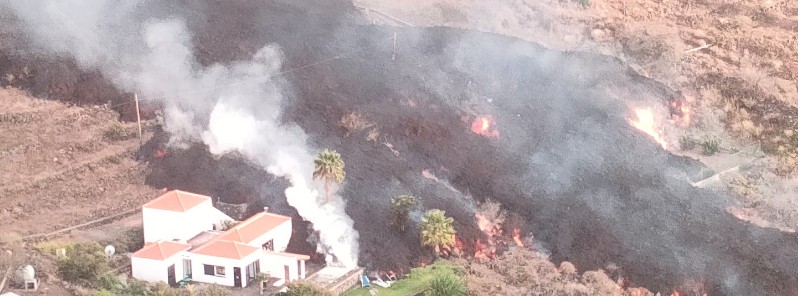
Lava flows produced by the eruption at Cumbre Vieja volcano on the island of La Palma, Canary Islands, Spain, destroyed 166 buildings since the eruption started on Sunday, September 19, 2021. As of September 20, lava flows are covering 103 ha (254 acres) of land.
Long fingers of fiery red lava slid down hillsides with white smoke billowing from their leading edges as they swallowed up houses, gardens, and swimming pools in a trail of destruction across the verdant countryside, the AP reports.1
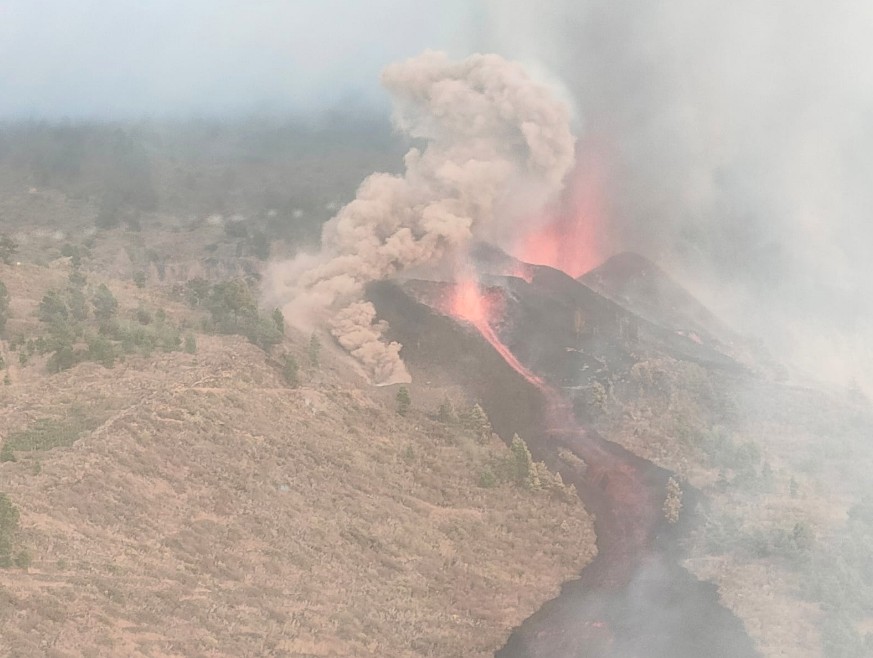
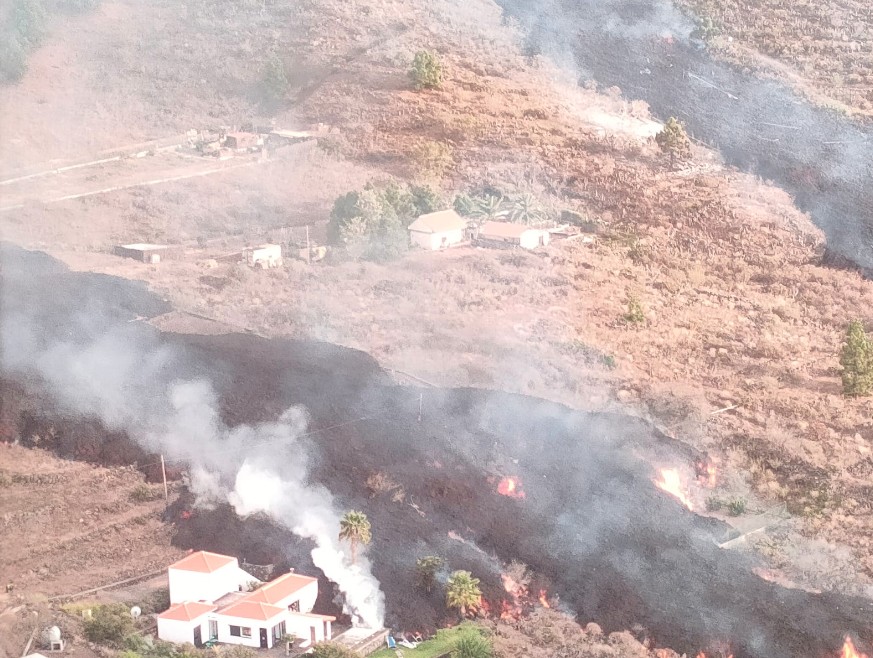
Lava flows at Cumbre Vieja on September 20, 2021. Credit: Guardia Civil
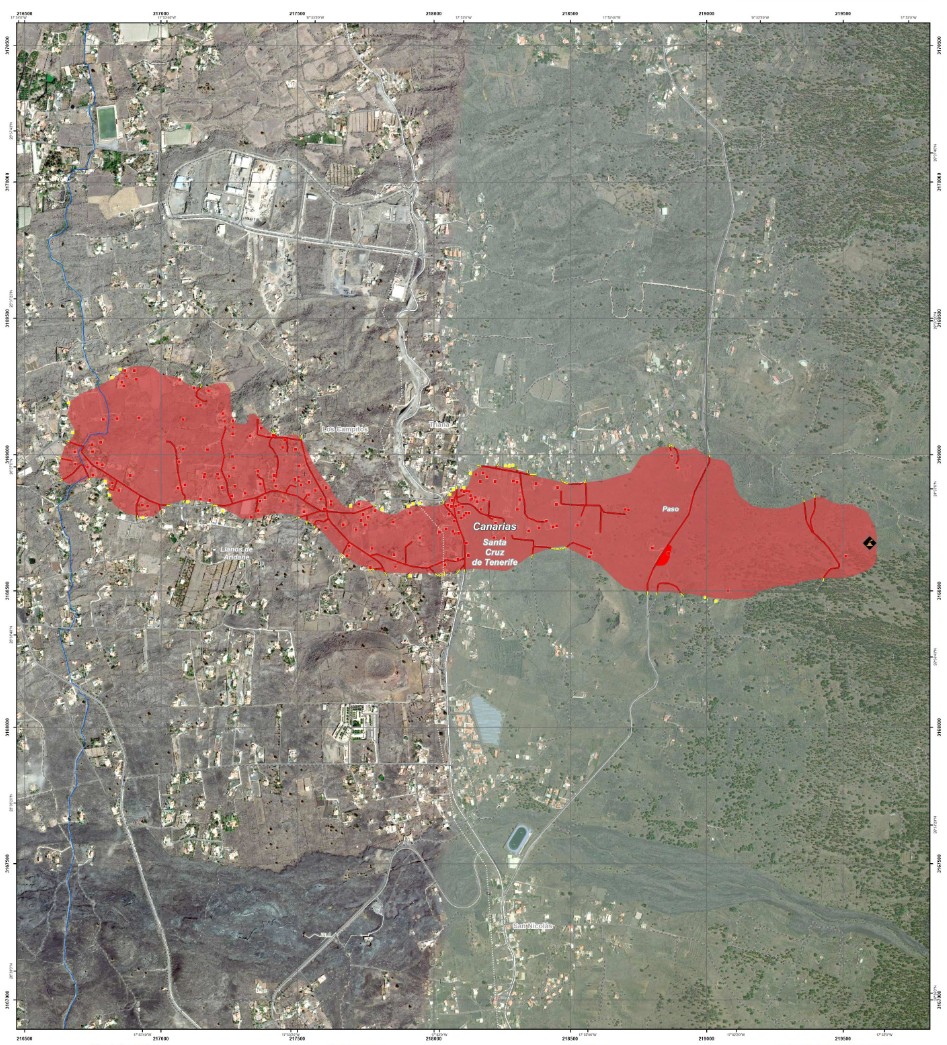
Cumbre Vieja volcano lava flow on September 20, 2021. Credit: Copernicus EU
"The movement of lava is much slower than it was initially. There has not been a large advance during the day," local emergency coordinator Miguel Angel Morcuende told a press briefing on Monday evening.2
La lengua de lava del proceso eruptivo de La Palma arrasa con todo a su paso en su camino hacia el mar. pic.twitter.com/InvtAhgtl5
— Agencia Canaria de Noticias y Audiovisuales. (@ACFIPRESS) September 20, 2021
Cerca de 300 efectivos de las #FCSE, además de personal de @DGTes y @proteccioncivil, siguen trabajando sobre el terreno para proteger y auxiliar a la población frente a la #ErupciónLaPalma
Imágenes captadas hoy por los medios aéreos de la @guardiacivil pic.twitter.com/tFp8xDt5iw
— Ministerio del Interior (@interiorgob) September 20, 2021
Más de 5000 personas han sido ya desalojadas en #LaPalma y la prioridad ahora es vigilar la lava, así como que no se produzcan incendios por la #erupción
Mucho ánimo a todos los afectados e integrantes del dispositivo de seguridad, del que 70 agentes de @Policia forman hoy parte pic.twitter.com/UHtP5xFKb3
— Policía Nacional (@policia) September 20, 2021
Por la #ErupcionLaPalma continúan cortadas 7 carreteras en ambos sentidos.
La LP301 y LP212 en El Paso
La LP214, LP211 y LP213 en Los Llanos de Aridane
La LP105 en San Andrés
La LP2 en Tajuya#TrabajamosParaProtegerte pic.twitter.com/OWwL3yeEoF— Guardia Civil (@guardiacivil) September 20, 2021
En este vídeo de la @guardiacivil se aprecia la gran labor que el cuerpo lleva realizando desde la jornada de ayer para rescatar y evacuar a los animales que se encuentran en las zonas afectadas por la erupción del #VolcanLaPalma #volcanCumbreVieja #VolcanCabezaDeVaca pic.twitter.com/jd49SyL48u
— RTVC (@RTVCes) September 20, 2021
Morcuende said the stream had made its way about halfway to the coast.
Regional leader Angel Victor Torres said the damage from the eruption will be substantial.
No fatalities or injuries have been reported.



The Volcanological Institute of Canary Islands (INVOLCAN) conducted further measures to assess and monitor the amount of sulfur dioxide (SO2) emitted into the atmosphere by the current eruptive process.
The results achieved for the second day of the eruption reflect an SO2 emission rate between 7 997 and 10 665 tons per day, assuming wind speed at 3 000 (9 800 feet) on September 20 between 4.2 and 5.5 meters per second.3
"Daily monitoring of this parameter will be critical to analyzing the evolution of the current process and to use this methodology to certify the end date of the eruption," INVOLCAN said.
"The values obtained during the second day of this eruptive process are similar and even slightly higher than the values recorded for the first day of the eruption (6 000 – 9 000 tons).
"These results are consistent with the first 48 hours of the evolution of this eruptive process with the appearance of a new point of emission of magmatic material in Tacande, an area of the municipality of El Paso."
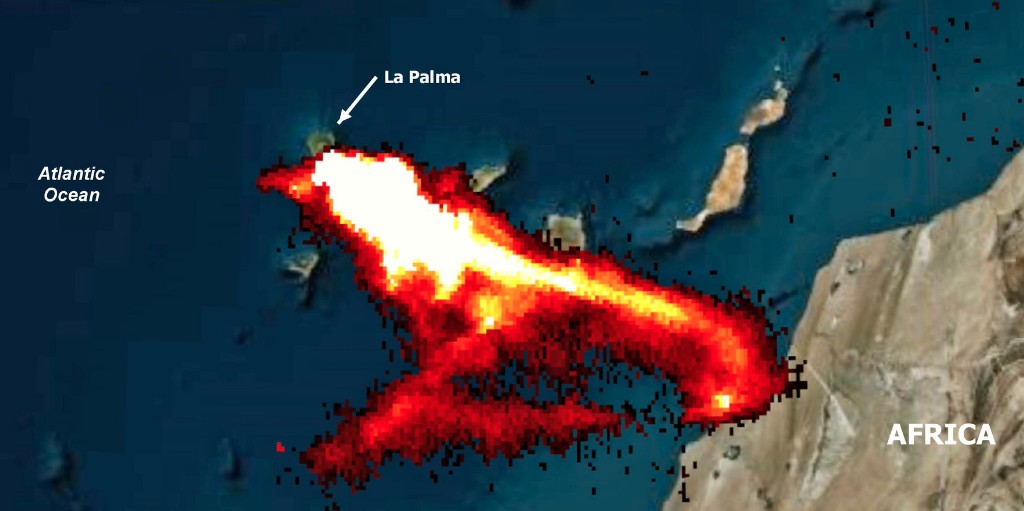

SO2 total column on September 20, 2021. Credit: Copernicus EU/Sentinel-2, ADAM Platform, Antonio Vecoli
Geological summary
The 47-km-long (29 miles) wedge-shaped island of La Palma, the NW-most of the Canary Islands, is composed of two large volcanic centers. The older northern one is cut by the massive steep-walled Caldera Taburiente, one of several massive collapse scarps produced by edifice failure to the SW.
The younger Cumbre Vieja, the southern volcano, is one of the most active in the Canaries.
The elongated volcano dates back to about 125 000 years ago and is oriented N-S. Eruptions during the past 7 000 years have originated from the abundant cinder cones and craters along the axis of Cumbre Vieja, producing fissure-fed lava flows that descend steeply to the sea.
Historical eruptions at La Palma, recorded since the 15th century, have produced mild explosive activity and lava flows that damaged populated areas.
The southern tip of the island is mantled by a broad lava field produced during the 1677-1678 eruption. Lava flows also reached the sea in 1585, 1646, 1712, 1949, and 1971.4
References:
1 Nobody hurt but much damage in Spanish volcano eruption – AP
2 Canaries volcano streams slow down, homes destroyed, thousands flee – Reuters
3 INVOLCAN – FB
4 La Palma – Geological Summary – GVP
Featured image: Lava flows at Cumbre Vieja on September 20, 2021. Credit: Guardia Civil

Commenting rules and guidelines
We value the thoughts and opinions of our readers and welcome healthy discussions on our website. In order to maintain a respectful and positive community, we ask that all commenters follow these rules.